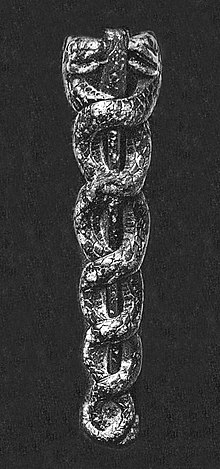
Back İlana sitayiş (totemizm) Azerbaijani Pagsamba sa halas BCL Snake worship English Käärmeenpalvonta Finnish സർപ്പാരാധന Malayalam Змеепоклонство Russian Snake worship SIMPLE Ormkult Swedish Tục thờ rắn Vietnamese

Le culte du serpent, ou ophiolâtrie, est une dévotion aux divinités serpents. Cette tradition est présente dans plusieurs cultures anciennes, notamment dans leur religion et leur mythologie, où les serpents étaient considérés comme détenteurs de connaissances, de force et de renouveau[1].
- ↑ (en) Ninian Smart, « Polytheism: Animal and human forms », dans Encyclopædia Britannica, Édimbourg, Encyclopædia Britannica, (1re éd. 26 July 1999) (lire en ligne [archive du ]) :
(archive du 11 novembre 2020) (consulté le )« Just as plants can be seen as divine forces, so can types or species of animals. For instance, the cult of the snake is widespread and is especially important in the Indian tradition. The serpent is vital in the Hebrew Bible (Old Testament) story of Adam and Eve and appears in the Babylonian Epic of Gilgamesh as one who knows the secret of rejuvenation. The snake has a fertility aspect because of its possible phallic significance and because it lives in holes in the life-giving earth. »